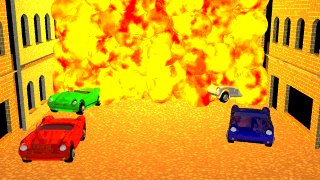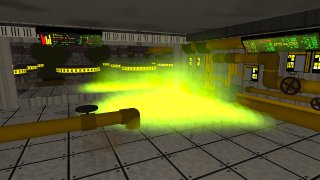|
Physics-Based Explosion Modelling
for Computer Graphic Applications
Byron Bashforth Updated March 17, 1999 |
|
More information about this research is available on my
home page.
|
| |

|

|

| |
|
My thesis work implemented a software animation system capable of generating explosion sequences automatically. Implemented as a discrete time simulation, physical principles are used to drive the explosion process. Since explosions are very complex, this work relied on the concept of emergence. Small, cube-shaped volumes of air interact with nearby volumes using a simple set of rules. With a large number of these volumes, complex behaviour results. The main contributions of this work are: The most interesting results are three short animations that I produced with my software. The first (MPG, 469 KB) shows a fireball consuming cars parked along a city street. The second (MPG, 1809 KB) shows a slow "explosion". Some sort of toxic gas leaks out a vent in the top corner of a room, descends to the ground, and begins to spread along the floor. The final animation (MPG, 824 KB) is a supernovae-like explosion in space.
| | ||
 The development of an
atmospheric model capable of distributing energy through
convection and radiation. The atmosphere model controls the
formation and movement of pressure and shock waves.
The development of an
atmospheric model capable of distributing energy through
convection and radiation. The atmosphere model controls the
formation and movement of pressure and shock waves.